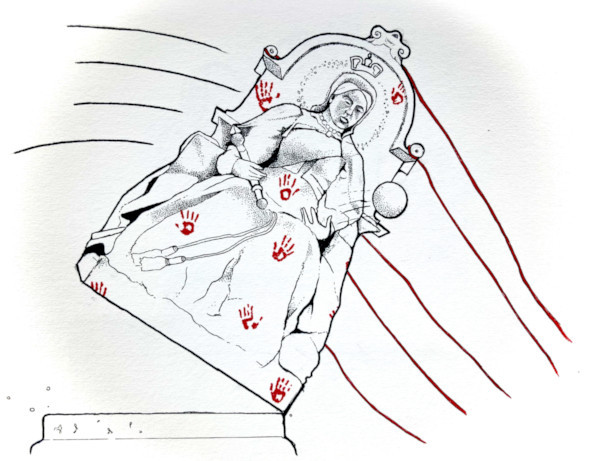Favourite local public art piece

Illustration by Gabrielle Funk
1. The toppling of the Queen Victoria statue
2. Bloody Saturday by Bernie Miller and Noam Gonick / Forever Bicycles by Ai Weiwei (tie)
On July 1, the Manitoba Legislative Building was surrounded by a sea of orange shirts. Hundreds of people gathered for the Every Child Matters Walk, an alternative to the festivities that usually take place on July 1 in the wake of the discovery of unmarked graves of Indigenous children found at residential-school sites across Canada.
Video captured from that day depicts a powerful scene: as protestors chanted “no pride in genocide!” the iron-coloured statue of Queen Victoria succumbed to the force of a rope being pulled by protestors. Red handprints painted the seat of concrete the former monarch had been sitting on since 1904. Warrior flags waved over the figurehead of the Crown: one of the primary architects of colonial domination.
In the aftermath of the statue’s toppling, local Indigenous artists began to reimagine what could stand in its place. Métis artist Kenneth Lavallee’s rendering of a shell and sweetgrass sculpture received ample support online.
“You burn sweetgrass to cleanse your mind and spirit, the environment and space. I thought this place could use a good cleansing,” Lavallee said in a CBC article published in July.
“I've been talking about the queen for a long time: that particular sculpture, how out of place it seemed here. Front row, centre. Why does she get the best spot? She's never been here. She doesn't really represent anything of Manitoba or its people.”
For now, it’s uncertain what will take the coveted spot in front of the Manitoba Legislative Building. What is certain is that the traditional boundaries of art bear no match to the power of collective resistance.
Published in Volume 76, Number 12 of The Uniter (December 2, 2021)






